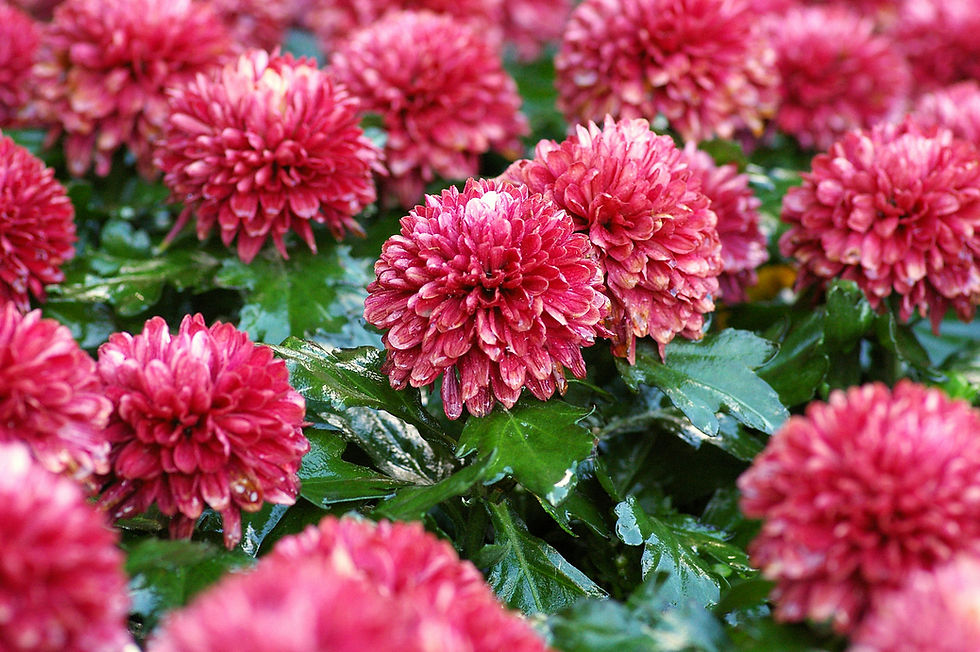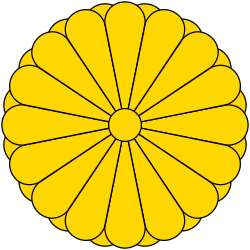Chōyō no Sekku: A Celebration of Longevity and Renewal
- Lori Tsugawa

- 4 days ago
- 3 min read

Every September 9th, Japan quietly observes Chōyō no Sekku (重陽の節句), also known as the Chrysanthemum Festival or the Double Ninth Festival. While it is not as widely celebrated today as Hinamatsuri (Doll’s Festival on March 3) or Tanabata (Star Festival on July 7), its message carries timeless wisdom—inviting us to reflect on longevity, resilience, and the fleeting yet beautiful nature of life.
The roots of Chōyō no Sekku reach back to ancient China. The number nine was considered highly auspicious, yet also powerful, and when doubled, on the ninth day of the ninth month, it was believed to carry a potent spiritual energy. In Chinese tradition, this date was marked with rituals to ward off misfortune, seek protection from illness, and celebrate long life.
When the festival was introduced to Japan during the Heian period (794–1185), it took on new layers of meaning. At the imperial court, nobles would gather to compose poetry, admire chrysanthemums, and drink sake infused with chrysanthemum petals. It became both a celebration of autumn and a symbolic ritual for purifying the heart, cultivating health, and contemplating life’s impermanence.

The chrysanthemum, or kiku, holds a revered place in Japan’s cultural and spiritual identity. Unlike spring’s cherry blossoms, which symbolize the beauty of life’s impermanence, the chrysanthemum blooms in the cooler air of autumn, representing endurance, purity, and rejuvenation.
Over time, the chrysanthemum became a national emblem. The Imperial Family’s crest features a golden chrysanthemum, underscoring its connection to longevity and noble spirit. It is also celebrated every November during the annual Kiku Matsuri (Chrysanthemum Festival), where elaborate floral displays showcase the artistry and resilience of this flower.
The chrysanthemum’s layered petals mirror the layers of human experience, reminding us that wisdom, patience, and growth unfold gradually, season after season.
For the samurai, festivals were never mere holidays. They were touchstones in the rhythm of life, moments to realign with values, strengthen the spirit, and contemplate mortality.
Chōyō no Sekku carried a special resonance for warriors. The act of drinking chrysanthemum sake was not just for health, it symbolized fortifying one’s spirit against adversity. Writing poetry, admiring the fleeting blossoms, and observing the change of seasons encouraged mindfulness, a quality central to Bushido.
The samurai code valued Makoto (sincerity), living truthfully and authentically, as well as Kaizen, the principle of continuous improvement. In this sense, Chōyō no Sekku was not just about wishing for long life, but about living with integrity and resilience, even in the face of inevitable change.
Today, Chōyō no Sekku may not be widely observed, but its teachings remain deeply relevant. In a world that moves at relentless speed, this festival calls us to pause. To notice the seasons. To reflect on our health, our purpose, and the relationships that give life meaning.
The chrysanthemum invites us to embody Ganbaru, to persist, endure, and keep moving forward even through challenges. Its autumn bloom reminds us that strength is not only found in youth or beginnings, but also in maturity and wisdom.
Just as samurai used this day to purify the spirit, we too can use it as a chance for renewal. Whether through journaling, spending time in nature, practicing gratitude, or simply sitting quietly with a cup of tea, we honor the essence of Chōyō no Sekku when we reconnect with life’s simple yet profound truths.
The chrysanthemum blooms with quiet dignity, carrying within its petals the lessons of resilience and longevity. It does not resist the changing season, it embraces it, standing tall even as the air cools and the days shorten.
As we mark September 9th, may we allow the spirit of Chōyō no Sekku to guide us: to live sincerely, to endure with grace, and to cherish each fleeting season of our lives.
How will you celebrate resilience and renewal in your own journey this autumn?



Comments